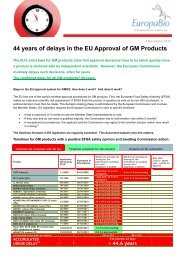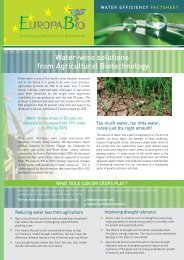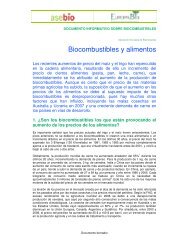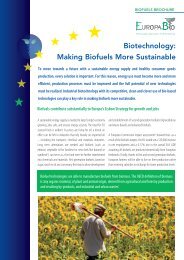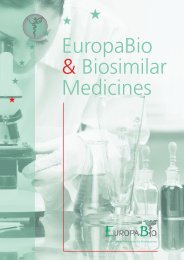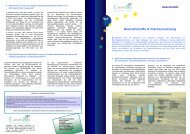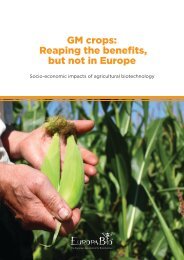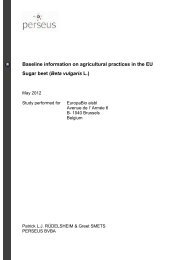Fact Sheet - Europabio
Fact Sheet - Europabio
Fact Sheet - Europabio
You also want an ePaper? Increase the reach of your titles
YUMPU automatically turns print PDFs into web optimized ePapers that Google loves.
In regions with high levels of infestation, MIR604 maize is an effective tool in integrated pest<br />
management strategies (IPM) and offers growers a safe and environmentally sustainable solution<br />
to control infestations while delivering full yield potential.<br />
MIR604 maize helps farmers improve productivity, secure yields, produce higher quality crops<br />
and reduce the environmental footprint of modern agriculture. Food and feed products made from<br />
MIR604 maize are safe to humans, animals and the environment.<br />
MIR604 Maize: Mode of Action<br />
Event MIR604 (marketed under the brand name Syngenta Agrisure RW) is genetically modified<br />
(GM) maize that expresses a protein which safely and effectively controls corn rootworm<br />
(Coleopteran, Diabrotica sp) infestations. This protein (modified Cry3A or mCry3A), is produced<br />
from the mCry3a gene, a synthetic gene that is related to the cry gene found in the naturallyoccurring<br />
soil bacterium, Bacillus thuringiensis (Bt). The gene is inserted into maize plants using<br />
modern biotechnology techniques and its effect is safe, targeted and reliable. Bt proteins have been<br />
used safely and successfully for insect control for nearly 50 years by farmers and gardeners.<br />
State-of-the-art scientific methods have enabled Syngenta scientists to maximize the production<br />
of mCry3A protein in maize roots, where rootworms feed, while minimizing the presence of the<br />
protein in other parts of the plant, such as the pollen.<br />
Additionally, a marker gene (pmi) has been added to allow the selection of transformed plants<br />
during the research and developmental stage. The pmi gene was isolated from the common<br />
bacterium Escherichia coli. The protein produced by this gene is phosphomannose isomerase<br />
(PMI). PMI allows transformed maize cells to utilize mannose (a simple sugar) as a sole carbon<br />
source, while maize cells lacking PMI cannot grow in this type of media. The PMI protein is<br />
already found naturally in many animal and plant species, and it is a safe selectable marker for<br />
plant transformation.<br />
5



